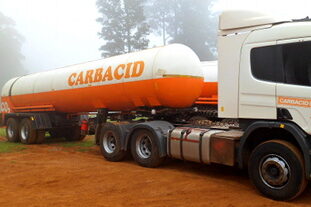Carbacid cuts Kenya Power bills by 25% after switching to solar plants

Nairobi, Kenya – Carbon dioxide (CO2) manufacturer Carbacid Investments Limited says it has reduced its electricity bills by 25% just months after installing two solar power plants.
The Nairobi Securities Exchange (NSE) listed company wants to add a third solar power plant to further reduce its energy costs, which make up a significant share of its operational costs.
Carbacid will not stop at just three solar plants, if its plans are anything to go by. The company wants to increase its solar power generation capacity to such an extent that solar covers all its production operations. Carbacid’s investments in solar highlight the growing trend of large power consumers abandoning Kenya Power due to high electricity costs.
During the year, the Group undertook significant investments in solar energy infrastructure. In February 2024, a solar power plant of 450kWp capacity was successfully commissioned in part of our production operations. Following this successful commissioning, the Group will expand this solar plant to cover all production operations. This investment in line with the group’s strategy on sustainable use of natural resources and reduce reliance on grid power.
carbacid
Carbacid says that its investments in solar will not only reduce its energy costs but also facilitate its contribution to climate change mitigation efforts. While about 85% of electricity consumed in Kenya is generated from renewable energy sources such as geothermal, hydro, solar and wind, the remainder is generated from pulling sources, primarily Heavy Fuel Oil (HFO).
Carbacid has been under increased pressure from rising costs of operation, driven by an increase in the electricity tariff, its labour cost was adjusted to accommodate inflationary pressure, and the maintenance cost on plant was not spared as the production equipment continued to operate at a higher utilization rate.
On the environmental front we have installed two solar plants and are in the process of surveying a third plant. We plan to start installation by early 2025. These two plants have already supported us to reduce our grid electricity consumption by over 25%
carbacid
Besides Carbacid, cement manufacturer Bamburi Cement Plc is also racing to complete the construction of two solar power plants that it is betting on to significantly cut its energy costs. The company, which is listed on the Nairobi bourse, is building a 14.5MW solar PV power plant at its manufacturing facility in Mombasa and another with a 5MW capacity at its Athi River plant.
These two companies highlight the growing shift by industrial electricity consumers from Kenya Power. The Energy and Petroleum Regulatory Authority (EPRA) has in recent years been inundated by hundreds of applications for captive power generation by large power buyers. These are companies that want to generate electricity from various sources for their own energy needs.
Kenya’s total captive power hit a record 532.6MW by June 2024, according to EPRA.
brian@theenergyreview.com
Discover more from THE ENERGY REVIEW
Subscribe to get the latest posts sent to your email.


